Rotator Cuff Tear
What is the rotator cuff?
The rotator cuff is a group of four muscles that originate on the shoulder blade (scapula) and insert as tendons onto the top of the arm bone (humerus). They form the deepest muscle-tendon layer in the shoulder. The rotator cuff is essential for rotating and raising the arm at the shoulder.
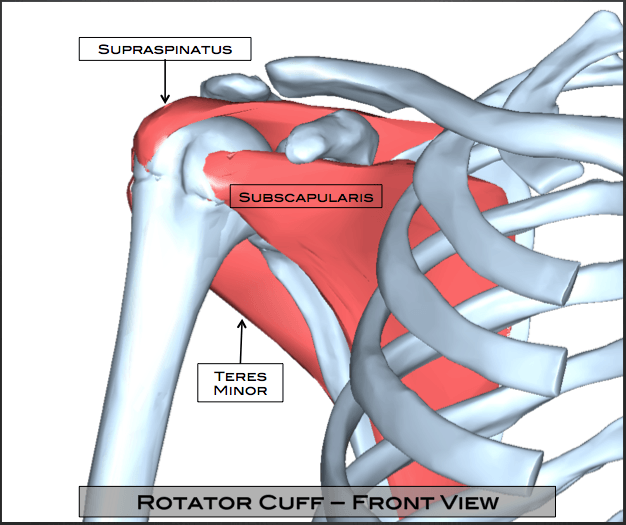
Three of the four rotator cuff muscles can be seen in this image, viewing from the front of the shoulder. These include the subscapularis, supraspinatus, and teres minor. The fourth muscle - the infraspinatus - is visible in the two images below.
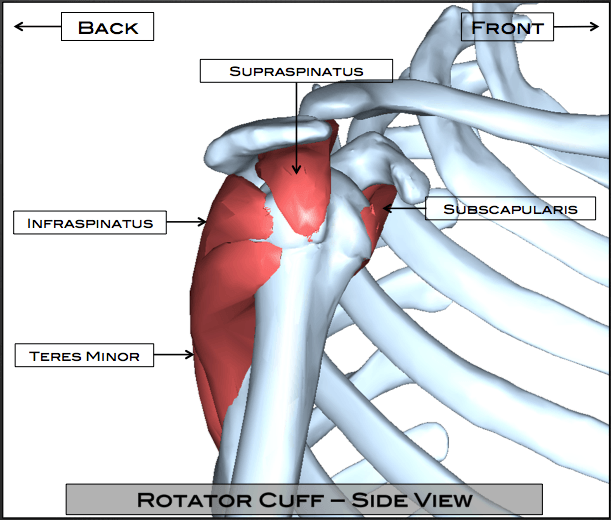
The tendons of the four rotator cuff muscles wrap around the humeral head much like the cuff of a shirt sleeve wraps around the wrist. From this perspective, one can imagine the critical role that these muscles play in rotation at the shoulder.
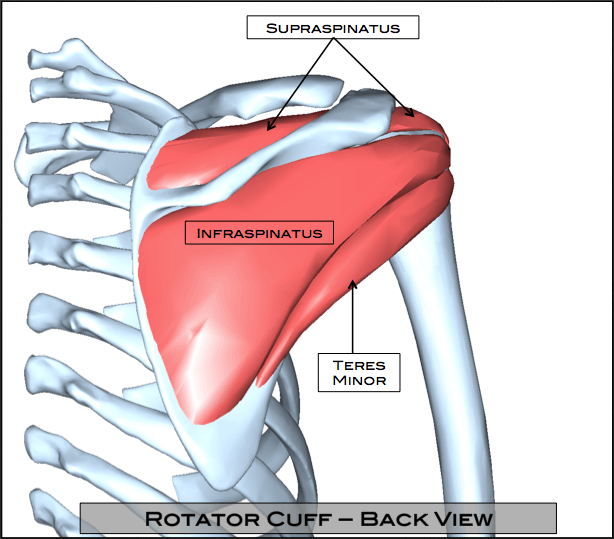
Three of the four rotator cuff muscles originate on the back of the shoulder blade (scapula) and can be seen here.
Why does the rotator cuff tear?
Unfortunately, the rotator cuff tendon is prone to tearing at its insertion on the humerus (see MRI images below). A variety of theories have been proposed to explain these tears, including poor blood supply, chronic subacromial impingement, trauma, overuse, and age-related changes. Tears may occur acutely as a result of a distinct injury such as a fall, but more commonly develop slowly over time. Rotator cuff tears most often occur in patients over 40 years old.
What are the symptoms of a rotator cuff tear?
Individuals with rotator cuff tears generally experience shoulder pain, weakness, and difficulty with activities that require raising the arm overhead. Tears range in size from small "partial thickness" tears involving only a portion of one tendon, to "massive" tears involving several tendons. Tears of any size can be painful. Larger tears, however, are more likely to cause weakness.
How is a rotator cuff injury diagnosed?
Dr. Driscoll will discuss your symptoms with you and perform a thorough physical examination of your shoulder. X-Rays are usually obtained to rule out arthritis or other bone problems. If Dr. Driscoll suspects that you may have a rotator cuff tear or other soft tissue injury, an MRI is usually obtained. The MRI generates excellent images of the soft tissue structures around the shoulder, including the rotator cuff. The MRI is usually sufficient to confirm the diagnosis.
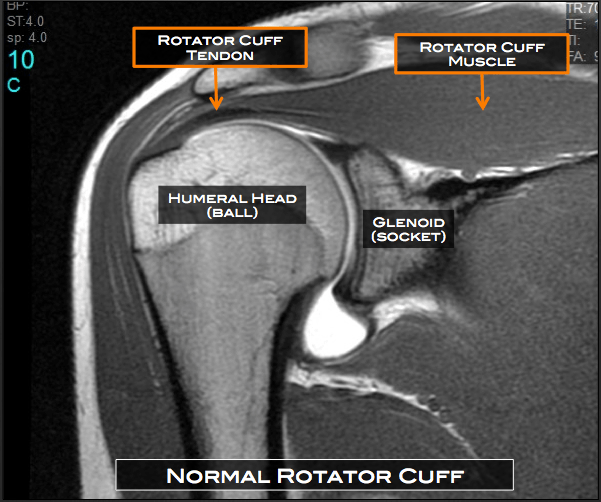
As seen on this MRI of a normal shoulder, the rotator cuff muscle transitions into tendon (black portion) as it runs toward its insertion on the humeral head.
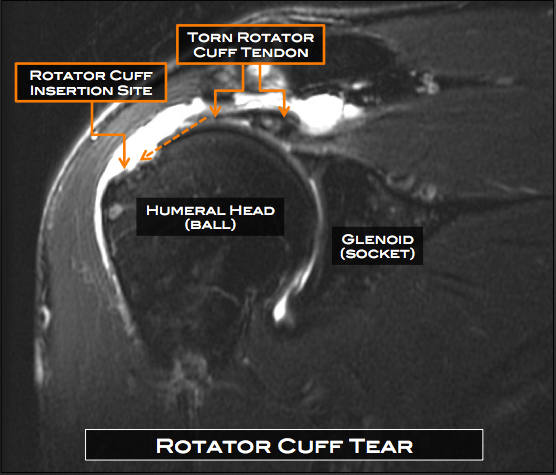
In this example of a "full thickness" rotator cuff tear, the supraspinatus tendon has pulled away from the normal rotator cuff insertion site on the humerus. In order for the tendon to heal, it must be secured back to its insertion site, as shown by the course of the dotted orange arrow.
What are the treatment options for a rotator cuff tear?
Treatment options include non-surgical and surgical alternatives. Non-surgical treatments include physical therapy, medications, and activity modification. When surgery is required, arthroscopic rotator cuff repair is the treatment of choice (read more about Arthroscopic Rotator Cuff Repair). The best treatment for you depends on several factors including severity and duration of symptoms, tear size, prior treatment attempts, overall health, and patient preferences. You and Dr. Driscoll will discuss your individual situation and create a treatment plan tailored for you.
